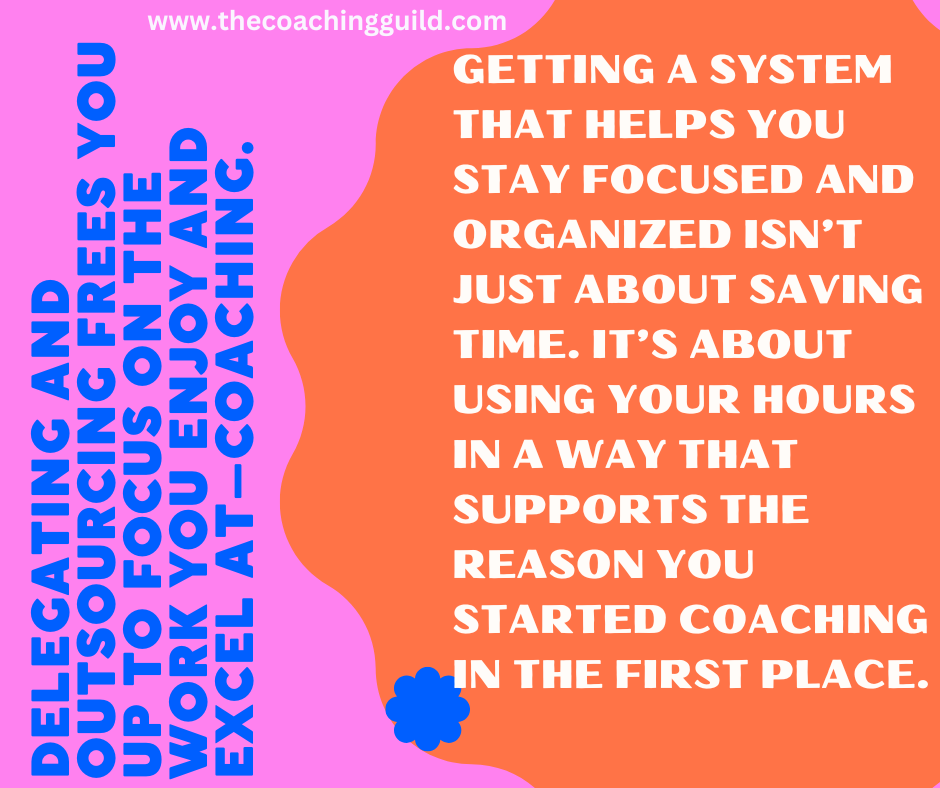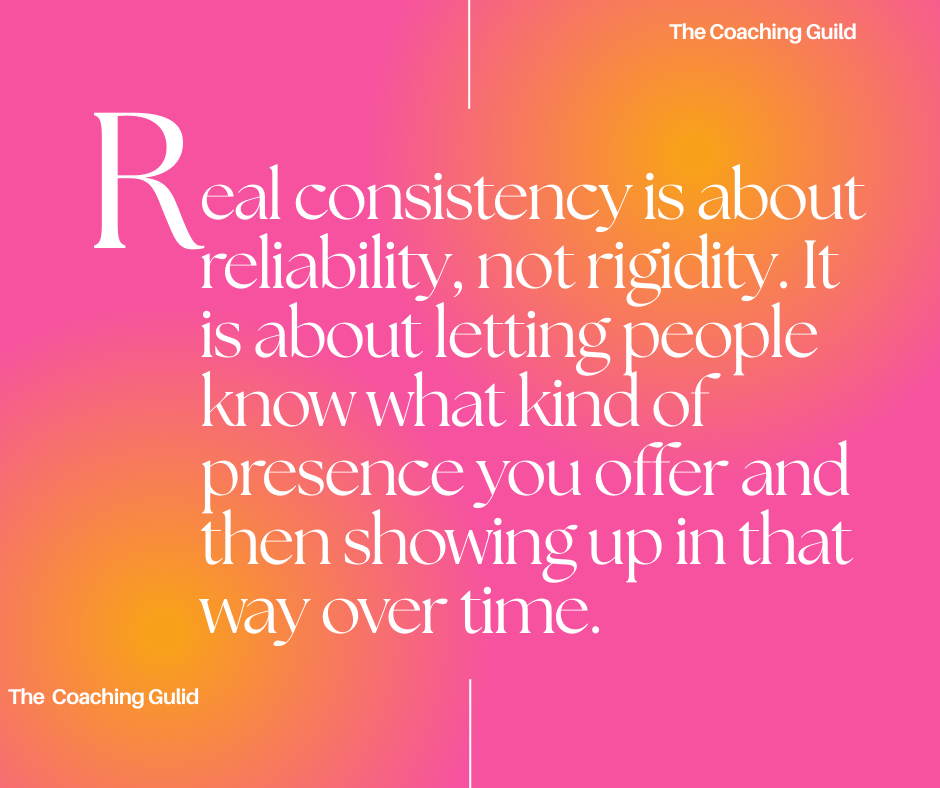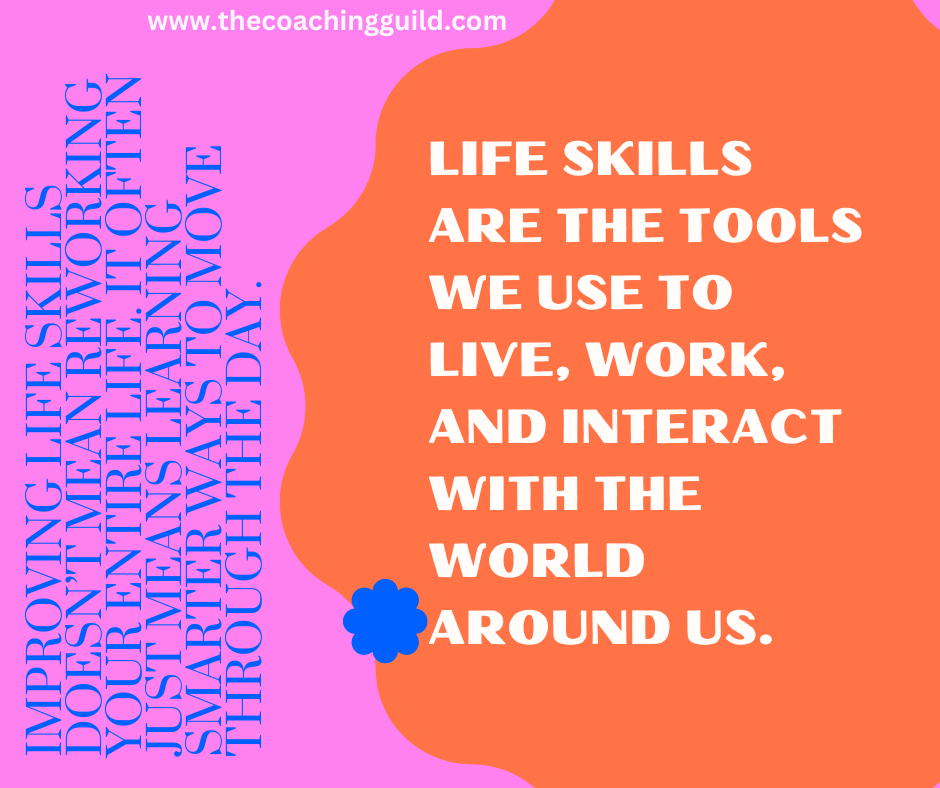Time Management Tips for Life Coaches
Discover practical strategies to elevate productivity for professional life coaches. Learn to prioritize, delegate, and maintain work-life balance effectively.

Professional life coaches often wear many hats. Beyond client sessions, they're building relationships, managing scheduling, creating systems, and finding time for their own learning and development. When your calendar fills up fast, you may find yourself skipping lunch or working after hours trying to catch up. It doesn’t take long before the day runs you instead of the other way around.
Getting a system that helps you stay focused and organized isn’t just about saving time. It’s about using your hours in a way that supports the reason you started coaching in the first place. Whether you’re juggling five clients or 25, time management brings you back in control so you’re not rushing between tasks, missing personal moments, or burning out before the week is over.
Prioritize Your Daily Activities
When your task list includes multiple clients, marketing work, invoices, and content planning, it can be tricky to know where to start. What actually matters most today? That’s where setting clear priorities comes in.
Start your day by picking out your top three goals. Think of these as tasks that, when completed, will move your coaching practice forward. Don’t overwhelm yourself by trying to squeeze 20 items into a single day. Once you've picked your main focus points, everything else becomes optional if time runs short.
Here’s a simple way to separate what’s truly important from what’s just noise:
- Urgent and Important: These are must-do-today items, like being on time for your coaching session or responding to a client emergency
- Important but Not Urgent: Planning out your next workshop or creating social media content for the week ahead falls here
- Urgent but Not Important: Things that feel pressing, like a last-minute meeting invite, but could really wait or be handed off
- Not Urgent and Not Important: Low-priority tasks that don’t actually need to eat up your energy
To stay organized, try using planning tools in a way that works for how your brain operates. Some coaches enjoy digital visuals like Trello or ClickUp. Others prefer a basic planner and colored pens. Test a few methods until something clicks. The goal is a method that helps you stay consistent and supports daily progress.
Time Blocking Techniques That Work
Time blocking is one of those simple strategies that can completely shift how your week feels. Instead of switching between tasks all day long, you assign each type of work its own block of time. That way, you can focus on one thing at a time without distractions.
Say your brain is sharpest in the morning. Block off 9 to 11 a.m. for deep focus work like preparing coaching materials. Use afternoons for admin or responding to emails when your energy dips. If client calls drain you, try grouping them into one window rather than spreading them out.
Here’s how to set up an effective weekly time block:
1. List your weekly recurring tasks, like coaching sessions, admin work, or marketing
2. Estimate how much time each type of work takes
3. Open your calendar and block time for deep work, shallow work, client sessions, and rest
4. Leave gaps for breaks, movement, or unexpected needs
5. Revisit the schedule each week and tweak what feels off
For example, maybe you set Mondays for prepping content and admin tasks, Tuesdays and Thursdays for coaching sessions, Wednesdays for training or strategy, and Fridays for wrap-up or lighter planning. Adding light structure keeps your days flowing better without feeling rigid.
Delegate and Outsource Smartly
Trying to handle everything yourself may feel efficient at first, but it can create more stress and slow long-term growth. Delegating and outsourcing frees you up to focus on the work you enjoy and excel at—coaching.
Start by writing down everything you do in a typical week. Track time spent replying to emails, scheduling, sorting files, or posting online content. Many of these recurring tasks can be handed off.
Some examples include:
- Inbox and calendar management
- Scheduling client sessions
- Formatting blog content
- Designing decks or workbooks
- Posting to X or other social platforms
- Organizing digital files or data
When you’re ready, start small. Hire a virtual assistant to take on just five to ten hours a week. Look for someone familiar with coaching or service-based businesses. Clearly explain expectations, set shared goals, and check in regularly.
By letting go of repetitive admin work, you create space to be fully present for clients, plan ahead, or build out your next offer—all without feeling stretched thin.
Make Room for Regular Self-Care
Your energy affects everything. If you’re always on the go and never pausing, it will eventually show in your work. That’s why building in self-care matters just as much as setting appointments.
Self-care doesn’t need to be fancy or expensive. What it needs to be is non-negotiable. Here are a few ways to fit it into your schedule without it feeling like another task:
- Take short walks between sessions
- Block out 30-minute screen-free windows during the day
- Hold one evening each week where no coaching work is allowed
- Use lunch breaks for light stretching or breathing exercises
- Reserve one time block weekly for something just for you
When your body and mind feel better, you show up clearer and calmer. And your sessions reflect that. You can’t give your best if your tank is always running on empty.
Clean Up Your Work Environment
Work happens more easily in a space that brings focus, not friction. A noisy background, messy desk, or cluttered desktop can sap your energy before you even get started.
Start by choosing a physical setup you use most often. Keep it clean, comfortable, and consistent. You don’t need anything fancy—good lighting, a functional desk, and a chair that supports you go a long way.
Your digital space matters just as much. Try these steps to keep it clean:
- Organize files into folders by topic or client
- Clear your digital desktop every Friday
- Disable unneeded app notifications
- Use fewer browser tabs during deep work
A tidy environment removes small distractions so your mental energy can go where it’s needed—your clients and your creative thinking.
Balance Flexibility With Structure
Being flexible helps you adapt to client needs. But without boundaries, every day starts to feel open-ended and unpredictable. That kind of chaos can drain your energy fast.
Structure doesn’t mean being rigid. It means giving your week some backbone so you can be more intentional. A few achievable ways to set some guardrails include:
- Define typical session hours, like Monday through Thursday for client work
- Give yourself a consistent start and end time to each workday
- Turn off email and notifications outside your work hours
- Communicate clearly with clients about when you’re available
This bit of routine helps you protect your time without being unavailable. You’re still responsive, just not reactive to everything the moment it pops up.
Get More From Every Client Session
Client work is the heart of your coaching, but without a routine, it can take more time than necessary. A few tweaks can help each session be smoother and more impactful.
Before each call, take five minutes to glance at your notes and outline a simple goal. What outcome or step would make this session a win? Bringing that focus into the call helps keep things on course.
After the session, spend another five minutes noting highlights and possible next steps. That way, your follow-up work is quicker. To save even more time, batch your emails or summaries when your session block is over rather than stopping between sessions.
These small additions give your coaching a rhythm, helping you reduce after-hours catch-up and improve results for your clients.
Sharpening How You Work, One Week at a Time
Time management isn’t something you figure out once. It’s an ongoing practice that needs re-tuning from time to time. As your coaching practice grows, your routines may need to stretch and shift, too.
Over time, these regular check-ins help you spot patterns sooner and course-correct before things snowball. You might even consider connecting with another coach who can offer feedback or share wins and insights.
A strong coaching practice doesn’t come from cramming every moment. It comes from adjusting, improving, and creating an approach that supports both your business and your life. Time is one of your biggest assets—treat it like it matters.
Enhance your skills and become one of the standout coaches in your field by exploring the diverse specialties available through The Coaching Guild. Embrace the opportunity to refine your methods, streamline your workflow, and ensure your coaching journey is focused and rewarding. Learn how our
professional life coaches can support your goals and help you grow with intention. Professional life coaches often wear many hats. Beyond client sessions, they're building relationships, managing scheduling, creating systems, and finding time for their own learning and development. When your calendar fills up fast, you may find yourself skipping lunch or working after hours trying to catch up. It doesn’t take long before the day runs you instead of the other way around.
Getting a system that helps you stay focused and organized isn’t just about saving time. It’s about using your hours in a way that supports the reason you started coaching in the first place. Whether you’re juggling five clients or 25, time management brings you back in control so you’re not rushing between tasks, missing personal moments, or burning out before the week is over.
Prioritize Your Daily Activities
When your task list includes multiple clients, marketing work, invoices, and content planning, it can be tricky to know where to start. What actually matters most today? That’s where setting clear priorities comes in.
Start your day by picking out your top three goals. Think of these as tasks that, when completed, will move your coaching practice forward. Don’t overwhelm yourself by trying to squeeze 20 items into a single day. Once you've picked your main focus points, everything else becomes optional if time runs short.
Here’s a simple way to separate what’s truly important from what’s just noise:
- Urgent and Important: These are must-do-today items, like being on time for your coaching session or responding to a client emergency
- Important but Not Urgent: Planning out your next workshop or creating social media content for the week ahead falls here
- Urgent but Not Important: Things that feel pressing, like a last-minute meeting invite, but could really wait or be handed off
- Not Urgent and Not Important: Low-priority tasks that don’t actually need to eat up your energy
To stay organized, try using planning tools in a way that works for how your brain operates. Some coaches enjoy digital visuals like Trello or ClickUp. Others prefer a basic planner and colored pens. Test a few methods until something clicks. The goal is a method that helps you stay consistent and supports daily progress.
Time Blocking Techniques That Work
Time blocking is one of those simple strategies that can completely shift how your week feels. Instead of switching between tasks all day long, you assign each type of work its own block of time. That way, you can focus on one thing at a time without distractions.
Say your brain is sharpest in the morning. Block off 9 to 11 a.m. for deep focus work like preparing coaching materials. Use afternoons for admin or responding to emails when your energy dips. If client calls drain you, try grouping them into one window rather than spreading them out.
Here’s how to set up an effective weekly time block:
1. List your weekly recurring tasks, like coaching sessions, admin work, or marketing
2. Estimate how much time each type of work takes
3. Open your calendar and block time for deep work, shallow work, client sessions, and rest
4. Leave gaps for breaks, movement, or unexpected needs
5. Revisit the schedule each week and tweak what feels off
For example, maybe you set Mondays for prepping content and admin tasks, Tuesdays and Thursdays for coaching sessions, Wednesdays for training or strategy, and Fridays for wrap-up or lighter planning. Adding light structure keeps your days flowing better without feeling rigid.
Delegate and Outsource Smartly
Trying to handle everything yourself may feel efficient at first, but it can create more stress and slow long-term growth. Delegating and outsourcing frees you up to focus on the work you enjoy and excel at—coaching.
Start by writing down everything you do in a typical week. Track time spent replying to emails, scheduling, sorting files, or posting online content. Many of these recurring tasks can be handed off.
Some examples include:
- Inbox and calendar management
- Scheduling client sessions
- Formatting blog content
- Designing decks or workbooks
- Posting to X or other social platforms
- Organizing digital files or data
When you’re ready, start small. Hire a virtual assistant to take on just five to ten hours a week. Look for someone familiar with coaching or service-based businesses. Clearly explain expectations, set shared goals, and check in regularly.
By letting go of repetitive admin work, you create space to be fully present for clients, plan ahead, or build out your next offer—all without feeling stretched thin.
Make Room for Regular Self-Care
Your energy affects everything. If you’re always on the go and never pausing, it will eventually show in your work. That’s why building in self-care matters just as much as setting appointments.
Self-care doesn’t need to be fancy or expensive. What it needs to be is non-negotiable. Here are a few ways to fit it into your schedule without it feeling like another task:
- Take short walks between sessions
- Block out 30-minute screen-free windows during the day
- Hold one evening each week where no coaching work is allowed
- Use lunch breaks for light stretching or breathing exercises
- Reserve one time block weekly for something just for you
When your body and mind feel better, you show up clearer and calmer. And your sessions reflect that. You can’t give your best if your tank is always running on empty.
Clean Up Your Work Environment
Work happens more easily in a space that brings focus, not friction. A noisy background, messy desk, or cluttered desktop can sap your energy before you even get started.
Start by choosing a physical setup you use most often. Keep it clean, comfortable, and consistent. You don’t need anything fancy—good lighting, a functional desk, and a chair that supports you go a long way.
Your digital space matters just as much. Try these steps to keep it clean:
- Organize files into folders by topic or client
- Clear your digital desktop every Friday
- Disable unneeded app notifications
- Use fewer browser tabs during deep work
A tidy environment removes small distractions so your mental energy can go where it’s needed—your clients and your creative thinking.
Balance Flexibility With Structure
Being flexible helps you adapt to client needs. But without boundaries, every day starts to feel open-ended and unpredictable. That kind of chaos can drain your energy fast.
Structure doesn’t mean being rigid. It means giving your week some backbone so you can be more intentional. A few achievable ways to set some guardrails include:
- Define typical session hours, like Monday through Thursday for client work
- Give yourself a consistent start and end time to each workday
- Turn off email and notifications outside your work hours
- Communicate clearly with clients about when you’re available
This bit of routine helps you protect your time without being unavailable. You’re still responsive, just not reactive to everything the moment it pops up.
Get More From Every Client Session
Client work is the heart of your coaching, but without a routine, it can take more time than necessary. A few tweaks can help each session be smoother and more impactful.
Before each call, take five minutes to glance at your notes and outline a simple goal. What outcome or step would make this session a win? Bringing that focus into the call helps keep things on course.
After the session, spend another five minutes noting highlights and possible next steps. That way, your follow-up work is quicker. To save even more time, batch your emails or summaries when your session block is over rather than stopping between sessions.
These small additions give your coaching a rhythm, helping you reduce after-hours catch-up and improve results for your clients.
Sharpening How You Work, One Week at a Time
Time management isn’t something you figure out once. It’s an ongoing practice that needs re-tuning from time to time. As your coaching practice grows, your routines may need to stretch and shift, too.
Over time, these regular check-ins help you spot patterns sooner and course-correct before things snowball. You might even consider connecting with another coach who can offer feedback or share wins and insights.
A strong coaching practice doesn’t come from cramming every moment. It comes from adjusting, improving, and creating an approach that supports both your business and your life. Time is one of your biggest assets—treat it like it matters.
Enhance your skills and become one of the standout coaches in your field by exploring the diverse specialties available through The Coaching Guild. Embrace the opportunity to refine your methods, streamline your workflow, and ensure your coaching journey is focused and rewarding. Learn how our
professional life coaches can support your goals and help you grow with intention.
The Coaching Guild is a training coach training program specifically designed to nurture dreamers, artists, creatives, outsiders, rebels, and good troublemakers. It is a multi-instructor, multi-disciplinary approach to training that prioritizes learning innovative foundational coaching skills and marketing training.
If you are interested in coach training done very differently, hit me up for a no-pressure, no BS, no trip, and fall into a sales funnel conversation. Let’s talk about what's possible for you as a coach.


